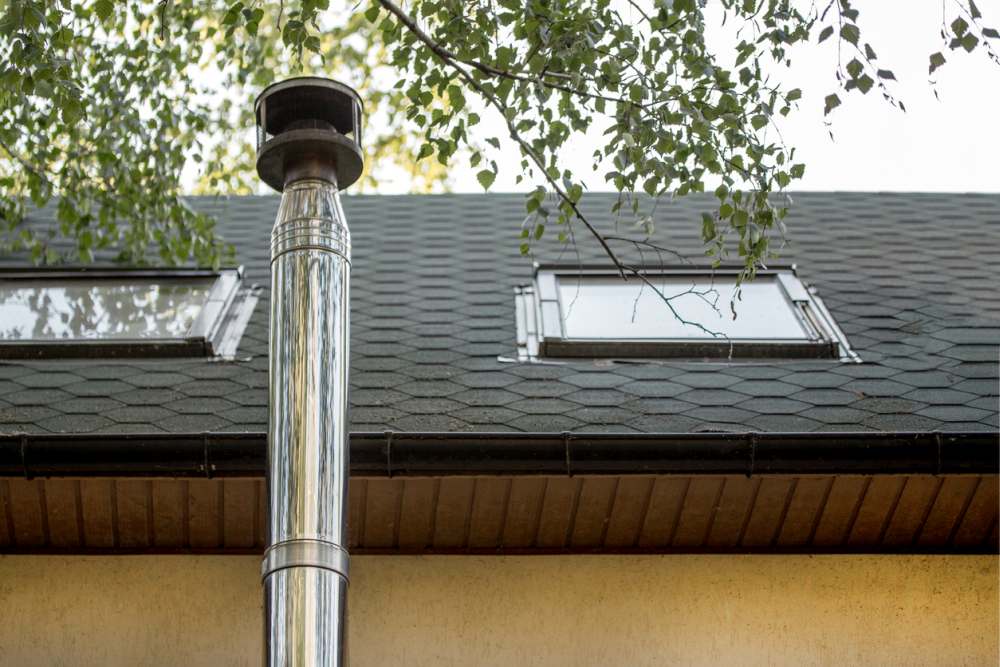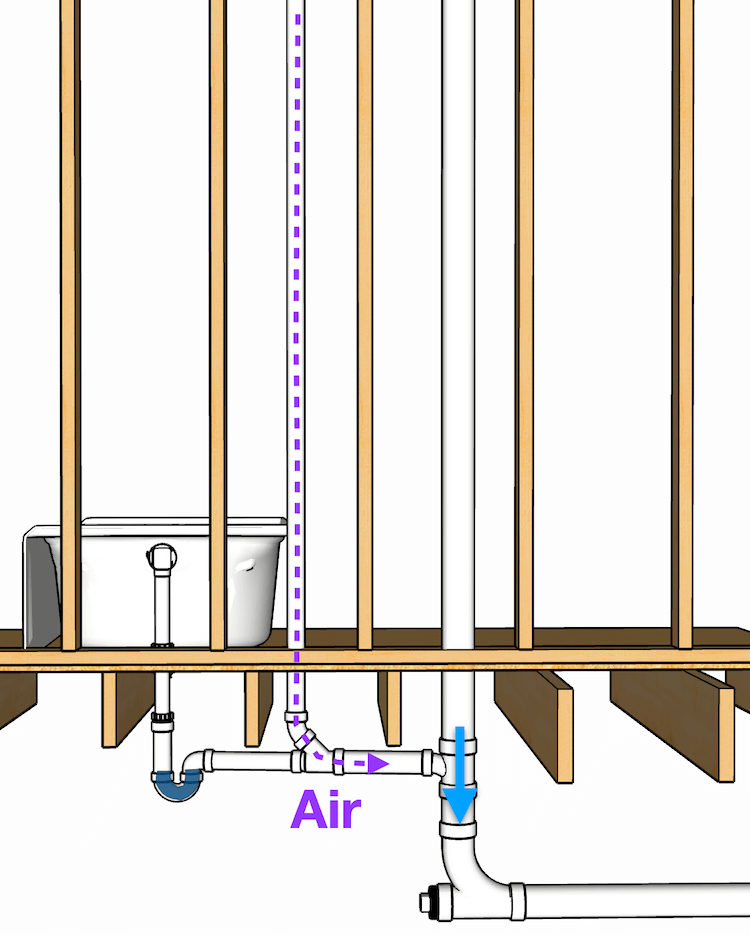The Key Role of Proper Ventilation in Plumbing Systems
The Key Role of Proper Ventilation in Plumbing Systems
Blog Article
What are your thoughts with regards to The Upsides of Proper Ventilation in Plumbing Design?

Appropriate ventilation in pipes systems is typically neglected, yet it is essential for keeping the capability and safety of your home's plumbing. Air flow aids manage air pressure, avoid the build-up of dangerous gases, and make certain the efficient elimination of waste. In this guide, we will certainly discover the value of appropriate plumbing ventilation, exactly how it functions, and the benefits it offers your pipes system.
Comprehending Air Flow in Pipes
Air flow in pipes describes the network of pipelines that allow air to flow through the drain system. These vents serve several objectives, consisting of regulating air pressure within the pipelines, protecting against sewage system gases from getting in the home, and aiding in the smooth circulation of wastewater.
Exactly How Ventilation Works in Pipes Solutions
Air Pressure Law
Appropriate ventilation preserves balanced atmospheric pressure within the plumbing system. When water flows via pipelines, it displaces air. Without ample ventilation, this variation can create negative stress, bring about slow drains pipes or siphoning of water from traps, which can trigger unpleasant odors to seep into the home.
Avoiding Sewer Gas Accumulation
Among one of the most vital functions of plumbing vents is to stop sewage system gases, such as methane and hydrogen sulfide, from collecting within the home. These gases can pose serious health and wellness risks and are very combustible. Vent pipelines enable these gases to run away securely outside.
Aiding in Waste Removal
Air flow assists in the effective elimination of wastewater by avoiding airlocks in the drain system. When air can flow freely via the vents, it enables water and waste to move efficiently via the pipelines, lowering the danger of obstructions and back-ups.
Kinds Of Pipes Vents
Key Stack Vent
The primary pile vent, additionally called the vent stack, is the primary air vent in a pipes system. It extends from the primary drain line up via the roof covering, enabling gases to escape and fresh air to get in the system.
Branch Vent
Branch vents attach to the major stack air vent and offer specific fixtures, such as sinks, commodes, and showers. These vents make certain that each fixture has sufficient air flow to operate properly.
Air Admission Valve (AAV).
An Air Admittance Shutoff (AAV) is a one-way shutoff that enables air to enter the plumbing system without the need for a standard air vent pipe expanding through the roof covering. AAVs are commonly made use of in restorations or areas where setting up a standard vent is impractical.
Indicators of Poor Ventilation in Plumbing.
Slow Draining Fixtures.
If your sinks, tubs, or bathrooms are draining slowly, maybe a sign of bad air flow. Poor air flow can create a vacuum effect, making it hard for water to drain pipes appropriately.
Gurgling Sounds.
Gurgling audios coming from drains are often a result of air being drawn via water traps due to unfavorable pressure in the pipes. This is a clear indication of inadequate ventilation.
Unpleasant Smells.
Drain smells inside your home are a warning that your plumbing system is not appropriately aerated. This might indicate that sewer gases are not being adequately vented outside, leading to potentially dangerous problems.
Usual Air Flow Mistakes.
Poor Vent Sizing.
Using small vent pipes can lead to poor air flow and stress inequalities in the system. It's necessary to make use of vents that fulfill the specific needs of your pipes system.
Improper Vent Placement.
Putting vents as well much from the fixtures they offer can lower their performance. Appropriate placement makes certain that air can stream openly and effectively through the system.
Ignoring Code Needs.
Building codes provide certain guidelines for plumbing ventilation. Overlooking these codes can result in a system that falls short to work correctly and might result in expensive repair work or carcinogen.
Benefits of Correct Ventilation.
Enhanced System Effectiveness.
Effectively ventilated plumbing systems operate extra effectively, with less obstructions, faster draining pipes, and less stress on the pipes. This effectiveness extends the life-span of the plumbing system.
Improved Air Top Quality.
By stopping sewage system gases from entering your home, correct ventilation contributes to better interior air quality, making your living atmosphere healthier and a lot more comfortable.
Preventing Water Damage.
Appropriate air flow assists prevent water from being siphoned out of traps, which can bring about sewage system gases entering the home and causing water damage over time.
Actions to Guarantee Appropriate Air Flow.
Consulting Plumbing Codes.
Always get in touch with neighborhood plumbing codes when designing or changing your pipes system. These codes give the essential standards for proper airing vent and ensure your system satisfies safety criteria.
Routine Examination and Maintenance.
Routine assessments can help recognize possible air flow issues before they come to be major issues. Upkeep jobs, such as cleansing air vent pipelines and checking for blockages, are necessary for keeping the system in good working order.
Expert Installment.
For brand-new installations or significant modifications, it's wise to work with a specialist plumbing technician. They have the expertise to ensure the ventilation system is appropriately developed and mounted according to code.
Verdict.
Correct air flow is a crucial element of any type of pipes system, making certain that it operates successfully and safely. By understanding the relevance of air flow, acknowledging the signs of poor air flow, and taking actions to keep your system, you can protect against expensive problems and secure your home's air quality.
What is a Plumbing Vent and it's used for?All plumbing systems in residential and commercials construction have a plumbing vent. It doesn’t just vent unwanted odors from the drainage system to the outside; it actually serves an important purpose by supplying air to the system.
The plumbing drainage system is actually called a drainage, waste and vent (DWV) system. When water flows down the piping, an air supply (vent) is needed to allow the water to flow. Think of the vertical pipe as a drinking straw. If you plug the top end of a straw, liquid won’t drain from it.
The DWV system in your building consists of a series of pipes connected to each fixture; they extend above each fixture, and the system terminates at an open pipe that extends through the roof. This piping allows air into the system and prevents unbalanced pressures in the piping.
?The vent also prevents the system from drawing water out of a trap at the fixture with the characteristic “glug-glug-glug” as the drain gasps for air. Plumbing traps should drain smoothly and never “glug” or gasp for air.
If you have a drain that empties slowly or gurgles as it drains, this may indicate a venting problem. If you flush a toilet and the sink gurgles, there’s definitely a vent problem. It is good idea to have a Plumber check this.
https://www.ameliashomeinspection.com/blog/what-is-a-plumbing-vent-and-its-used-for

I was introduced to that article on What Is A Plumbing Vent & How Do They Work? through an acquaintance on another blog. I beg you take the time to share this write-up if you liked it. We cherish your readership.
Additional Information Report this page